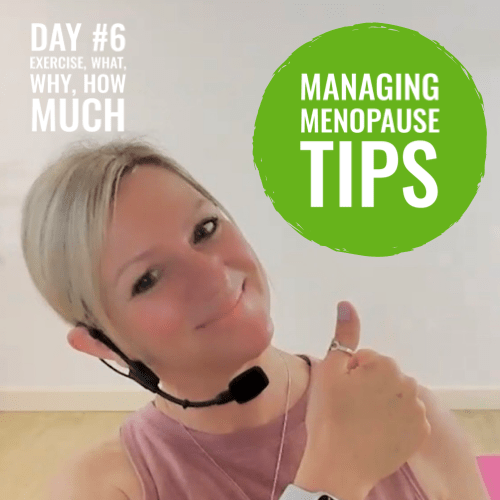
I’m assuming that if you’re reading my blog, and following my page you are already open minded as to the benefits and impact a that bit of exercise and good nutrition can have on your quality of life, longevity, energy levels and simply looking and feel fab 😃🙌.
As part of menopause awareness month I’m sharing things you can do to manage your symptoms and stay healthy.
One of the most important things you can do to help with menopause symptoms is to exercise regularly 🩺🚶♀️💖.
💖Exercise has a number of benefits for menopausal women, including:
💕Helps to control weight gain. Menopausal women often experience weight gain, especially around the abdomen. This is due to a combination of factors, including hormonal changes, decreased muscle mass, and reduced metabolism. Exercise can help to control weight gain and improve body composition.
💕Improves bone health. Menopause can increase the risk of osteoporosis, a condition that causes bones to become weak and brittle. Exercise, especially weight-bearing exercise, can help to strengthen bones and reduce the risk of osteoporosis.
💕Reduces the risk of chronic diseases. Menopause increases the risk of developing certain chronic diseases, such as heart disease, stroke, and type 2 diabetes. Exercise can help to reduce the risk of these diseases.
💕Improves mood and mental health. Menopause can also cause mood swings, anxiety, and depression. Exercise has been shown to improve mood and mental health in menopausal women.
💕Improves aches, pains, inflammation & fatigue. A good walk will really improve your energy levels and 30 mins exercise per day can also help you sleep much better which will also improve your energy levels.
💖What type of exercise is best for menopausal women?
💕The best type of exercise for menopausal women is a combination of cardiovascular exercise, strength training, and flexibility exercises.
💕Cardiovascular exercise helps to improve heart health, reduce the risk of chronic diseases, and boost energy levels. Examples of cardiovascular exercise include walking, running, biking, swimming, and dancing and will help with weight management
💕Strength training helps to build and maintain muscle mass, strengthen bones, and improve balance, improves metabolism and helps maintain a healthy weight. Examples of strength training exercises include lifting weights, using resistance bands, and doing bodyweight exercises.
💕Flexibility exercises help to improve maintain and improve range of motion around a joint. Lack of movement and reduction in collagen can result in tight, inflexible muscles which in turn increases the of injuries. Flexibility exercises, pilates and yoga can protect against this.
⏱️How much exercise do menopausal women need?
⌚️Aim for 5 x 30 min of moderate intensity exercise per week that will elevate your heart rate. This can be done in one go or 3 short 10 min bursts. Walking is low impact and perfect for this.
⌚️Resistance training/muscle-strengthening activities that work all major muscle groups (legs, hips, back, abdomen, chest, shoulders, and arms) 1 – 2 or more days a week.
⌚️If you are new to exercise, start slowly and gradually increase the amount of time you spend exercising each week. 10 – 15 mins per day gradually building up is a fab way to start.
💪Exercise is a powerful tool that can help menopausal women stay healthy and manage their symptoms. Make exercise a regular part of your routine to reap the many benefits it has to offer.
📲I hope this helps, save this post and don’t forget to follow my page for more weekly menopause tips.
Jayne xxxxx
#menopause #menopausefitness #menopausediet #midsectionweightgain #getfitwithjayne #fitnesstips #menopausetips
